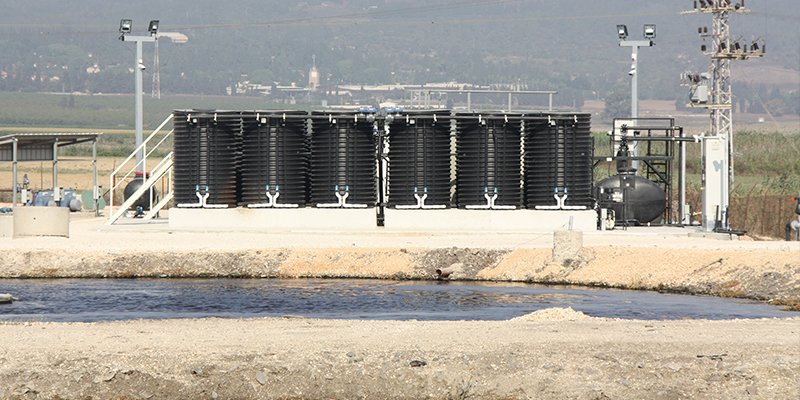
Membrane aerated biofilm aerators (MABRs) use spirally wound membranes for passive aeration and biofilm based nitrification-denitrification, slashing energy costs.
Aerobic wastewater treatment ranges from the simple to revolutionary technologies like MABR, which saves energy and is ideal for decentralized treatment
Aerobic wastewater treatment takes many forms, but fundamentally it’s a biological process widely used in the treatment of both domestic and industrial wastewater, particularly waste streams high in organic or biodegradable content. Aerobic treatment can be as simple as the septic tank. While there’s still a role for more traditional aerobic treatment options, exciting new technologies are expanding its horizons, making its use possible even outside of existing infrastructure.
Time-Tested Treatment
The activated sludge process, an aerobic process developed in Britain in the 1900s, uses microorganisms to remove organic pollution from wastewater. Activated sludge describes the microbe-rich deposits that form in settling tanks and basins and that are gradually added to incoming wastewater.
Typically, the water being treated first goes through screening and/or a primary sedimentation stage. Suspended substances, such as oil, can be removed at this stage. Then activated sludge is added to the mixture, which is aerated to facilitate mixing and to provide oxygen that microorganisms need to decompose dissolved or suspended organic materials into water, carbon dioxide, and other compounds. After decomposition, remaining debris settles in the water.
As the World Bank explains:
The activated sludge process has three basic components: 1) a reactor in which the microorganisms are kept in suspension, aerated, and in contact with the waste they are treating; 2) liquid-solid separation; and 3) a sludge recycling system for returning activated sludge back to the beginning of the process. There are many variants of activated sludge processes, including variations in the aeration method and the way the sludge is returned to the process.
The amount of air and sludge can be varied based on the desired treatment. Remaining sludge is separated using a settling tank. A portion of the sludge is reused, and excess is disposed of.
Packaged Wastewater Treatment Plants
Activated sludge can treat almost any volume of wastewater. A packaged wastewater treatment plant commonly uses activated sludge in its treatment process. The technologies found in Fluence’s Tipton packaged plants include screening, flow equalization, aeration, clarification, sludge digestion, and effluent disinfection. The resulting water is a high-quality, disinfected effluent.
The microorganisms used to stabilize the organic content of the wastes in the wastewater can include bacteria, nematodes, and many other small organisms. Determining which bacteria should be used to treat the wastewater depends on the organic compounds found in the wastewater, the plant’s operation, and conditions for the organisms during the process. High levels of carbohydrates or low pH, for example, can prompt the growth of fungi, which can prevent a plant from operating properly. Temperature can also play a role in treatment.
Membrane Aerated Biofilm Reactor (MABR) Technology
There are numerous challenges associated with the effective use of activated sludge treatment, particularly in developing nations. It can be prohibitively expensive, primarily due to the amount of energy used in aeration. Other challenges include operations and maintenance issues.
Fluence’s membrane aerated biofilm reactors (MABRs) use a revolutionary process that slashes energy use for aeration by 90% and overall treatment costs by 50%, and also substantially reduces the amount of sludge to be disposed of, making the process ideal for decentralized treatment.
In MABR, a spirally wound membrane is submerged in a tank. Wastewater is fed continuously and discharged by overflow. Low-pressure air is blown through one side of the membrane and the biological activity takes place on the other side.
Oxygen is constantly supplied to a fixed biofilm that develops on the wastewater side of the membrane sleeve. Aerobic and anoxic conditions develop in this zone, leading to simultaneous nitrification and denitrification using very little energy and space.
MABR plants’ capacities range from 50 to 2,000 m3/d, making them ideal for housing developments, resort hotels, and mining camps.
To learn more about aerobic treatment and to find the right solution for your wastewater needs, contact our experts.
